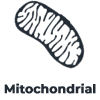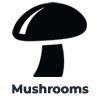One of the most well-known tart cherry benefits is its effects on exercise recovery. This tart cherry benefit can be traced back to its Anthocyanin content. During exercise, our muscles are much more metabolically active while also undergoing significant amounts of stress and minor damage. Combined, these outcomes of exercise lead to elevated levels of oxidation and inflammation post-exercise. This is, for the most part, a good thing and is what allows us to adapt to these stressors which enables us to develop stronger and more metabolically efficient muscles. This process is called exercise adaptation and is very important to achieving overall exercise goals. Take away inflammation and oxidation and this process doesn’t work anymore. Limit oxidation and inflammation, the process does not work as well, but there may be some added benefits. This is where tart cherry comes in.
After we work out, exercise-induced oxidation and inflammation keeps building and is sustained over the course of a few days. This is what usually leads to the experience of delayed onset muscle soreness, also known as DOMS. DOMS are basically the residual effects of exercise-induced inflammation and oxidation and in most cases is very undesirable as it prevents us from training at high intensity again while also not doing much for exercise adaptation. By taking a tart cherry supplement after a workout, we may help limit the onset and degree of DOMS. If we take a tart cherry supplement right after a workout, your body will still have some time to adapt to the exercise-induced inflammation and oxidation while at the same helping to support balanced levels of oxidation and inflammation in the longer term. This may help minimize DOMS. Sure, we may not be maximizing our ability to adapt to exercise, but on the flipside, we can speed up our recovery so that we can train again sooner. In our opinion, speeding up recovery here is the better option as you will be able to train more while also helping to support overall muscle function.
Does Tart Cherry Negate the Beneficial Effects of Exercise?
You may have heard that taking a supplement like tart cherry can negate the effects of exercise. This is partially true but depends heavily on timing. As we discussed above, taking a tart cherry supplement right after a workout can help speed up recovery by blunting exercise-induced oxidation and inflammation. However, if we took a tart cherry supplement right before a workout, then we may be limiting exercise-induced oxidation and inflammation from occurring at all. This may impact the effects of exercise and that is why we would recommend against taking a tart cherry supplement before or during exercise. Taking a tart cherry supplement post-exercise is a great idea though, and the longer you wait after your workout, the more you can allow your body to adapt to the effects of exercise at the expense of slower recovery. All that being said, this only applies to athletes who are actively training with the intent to get stronger, fitter, and faster. The script flips when we consider trained athletes that are competing.
Tart Cherry for the Competitive Athlete
For the competing athlete, we would advise following the opposite recommendation for training. Instead, we would recommend taking a tart cherry supplement before or during a competitive event. The reason for this dosing schedule is that during a competitive event; we are trying to squeeze out every last drop of performance and we are not hoping to walk away from the competition stronger than before. After all, that is what training is for. With a competitive event, we want to minimize the amount of exercise-induced oxidation, inflammation, and muscle damage so that we can compete in multiple events in a day or perhaps even multiple events over the course of a couple of days. One of the best ways to do this is by taking a tart cherry supplement before or during a competition so that you can support balanced levels of oxidation and inflammation which may help you recover much quicker after a competitive event. In fact, various studies have indicated that taking a tart cherry supplement before or during endurance exercise may help promote overall performance! This can likely be traced back to tart cherry supporting balanced levels of oxidation and inflammation during the endurance exercise.









